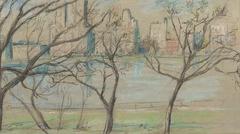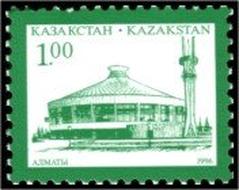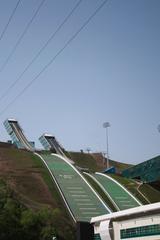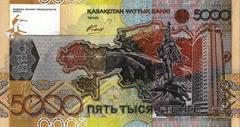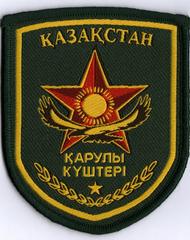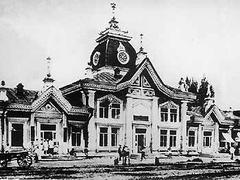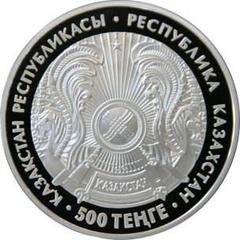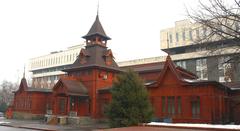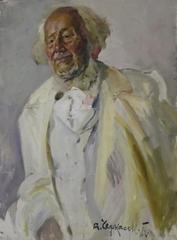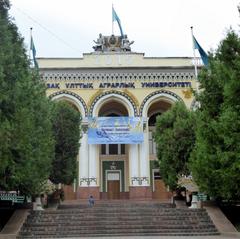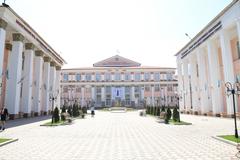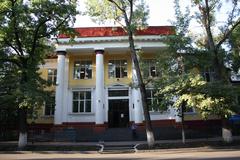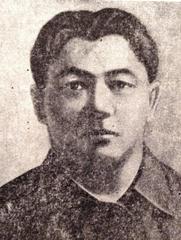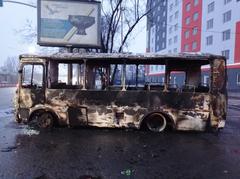Comprehensive Guide to Visiting Көк базар, Almaty, Kazakhstan
Date: 17/07/2024
Introduction
Көк базар, widely known as the Green Bazaar, stands as a historic and cultural cornerstone in Almaty, Kazakhstan. Established around 1875, this bustling market has evolved through various phases, from its foundational role in local commerce to a symbol of Soviet architectural ingenuity and modern economic adaptation. The market is a living testament to Almaty’s rich cultural tapestry, offering an extensive array of traditional Kazakh products such as dried fruits, nuts, spices, and handicrafts. It also plays a crucial role in preserving traditional Kazakh cuisine, featuring local delicacies like kurt, baursak, and kazy.
The Green Bazaar is not only a treasure trove of goods but also a significant contributor to the local economy. It provides livelihoods for thousands of vendors and attracts visitors from across Kazakhstan and beyond, thereby boosting demand for accommodations, transportation, and other services. This comprehensive guide aims to offer a detailed overview of Көк базар’s history, cultural significance, and practical visitor information, ensuring that you make the most of your visit to this iconic market.
Table of Contents
- Origins and Early History
- Soviet Era and Architectural Evolution
- Post-Soviet Transition and Modernization
- Cultural and Social Significance
- Economic Impact
- Visitor Information
- Special Events and Guided Tours
- Preservation and Future Prospects
- Conclusion
- FAQ
- References
Origins and Early History
Көк базар, established around 1875, has been a focal point for local farmers and traders to sell their produce and goods. Its strategic location in the heart of Almaty made it a vital center for commerce and social interaction.
Soviet Era and Architectural Evolution
During the Soviet era, Көк базар underwent significant transformations. In the 1930s, the market was reconstructed to align with Soviet architectural styles, featuring a more organized layout and modern amenities. The distinctive green roof, added in the 1960s and 1970s, became both a practical feature and a symbolic representation of the market’s identity.
Post-Soviet Transition and Modernization
Following Kazakhstan’s independence in 1991, Көк базар adapted to a market-driven economy. In 2017, a major renovation project upgraded the market’s facilities, including modern lighting, improved ventilation systems, and upgraded sanitary facilities.
Cultural and Social Significance
Көк базар is a vibrant social hub where people from different walks of life come together. It offers a wide array of traditional Kazakh products, including dried fruits, nuts, spices, and handicrafts. The market plays a crucial role in preserving traditional Kazakh cuisine, offering local delicacies such as kurt, baursak, and kazy.
Economic Impact
Көк базар is a significant contributor to the local economy, providing livelihoods for thousands of vendors and generating millions in annual revenue. It attracts visitors from across the country and abroad, boosting the local economy by increasing demand for accommodation, transportation, and other services.
Visitor Information
Visiting Hours: The market is open daily from 9 AM to 7 PM.
Tickets: Entrance to Көк базар is free, but some sections may have specific charges for certain attractions or events.
Travel Tips:
- Getting There: Easily accessible by public transportation, taxis, or on foot if you are staying in central Almaty.
- Nearby Attractions: Visit the Central State Museum, Zenkov Cathedral, and Panfilov Park, all within walking distance.
- Accessibility: The market is wheelchair accessible, and many vendors speak basic English, making it easier for tourists.
Special Events and Guided Tours
Көк базар hosts various cultural events and festivals throughout the year. Guided tours are available, offering deeper insights into the market’s history and cultural significance. Photographic spots are abundant, with the vibrant stalls and colorful products providing excellent photo opportunities.
Preservation and Future Prospects
Efforts to preserve the historical and cultural heritage of Көк базар are ongoing. Future plans include further modernization and expansion to enhance the market’s infrastructure and services.
Conclusion
Көк базар remains an indispensable part of Almaty’s cultural and economic landscape. Its rich history, from its establishment in 1875 to its Soviet-era architectural evolution and post-independence modernization, highlights its enduring significance. As a vibrant social hub, the market brings together people from diverse backgrounds and offers a plethora of traditional Kazakh products, contributing significantly to both the preservation of cultural heritage and the local economy.
For visitors, Көк базар provides an immersive experience into the heart of Kazakh culture, from sampling local delicacies to purchasing handmade crafts. Its accessibility, both in terms of location and facilities, makes it a convenient and enjoyable destination for tourists. Future plans for further modernization promise to enhance the market’s infrastructure and services, ensuring that it continues to thrive as a key economic and cultural institution in Almaty. Don’t miss the opportunity to explore this vibrant marketplace and immerse yourself in the unique atmosphere of Көк базар.
FAQ
What are the visiting hours for Көк базар?
- The market is open daily from 9 AM to 7 PM.
How much do tickets cost for Көк базар?
- Entrance is free, but some sections may have specific charges.
What are some nearby attractions?
- Central State Museum, Zenkov Cathedral, and Panfilov Park.
